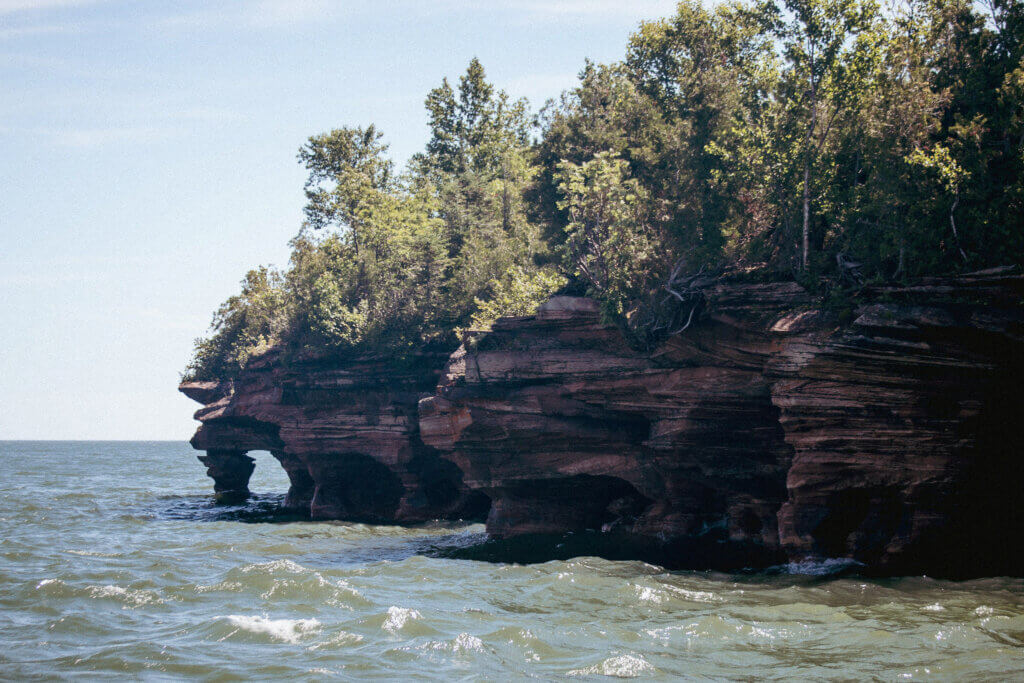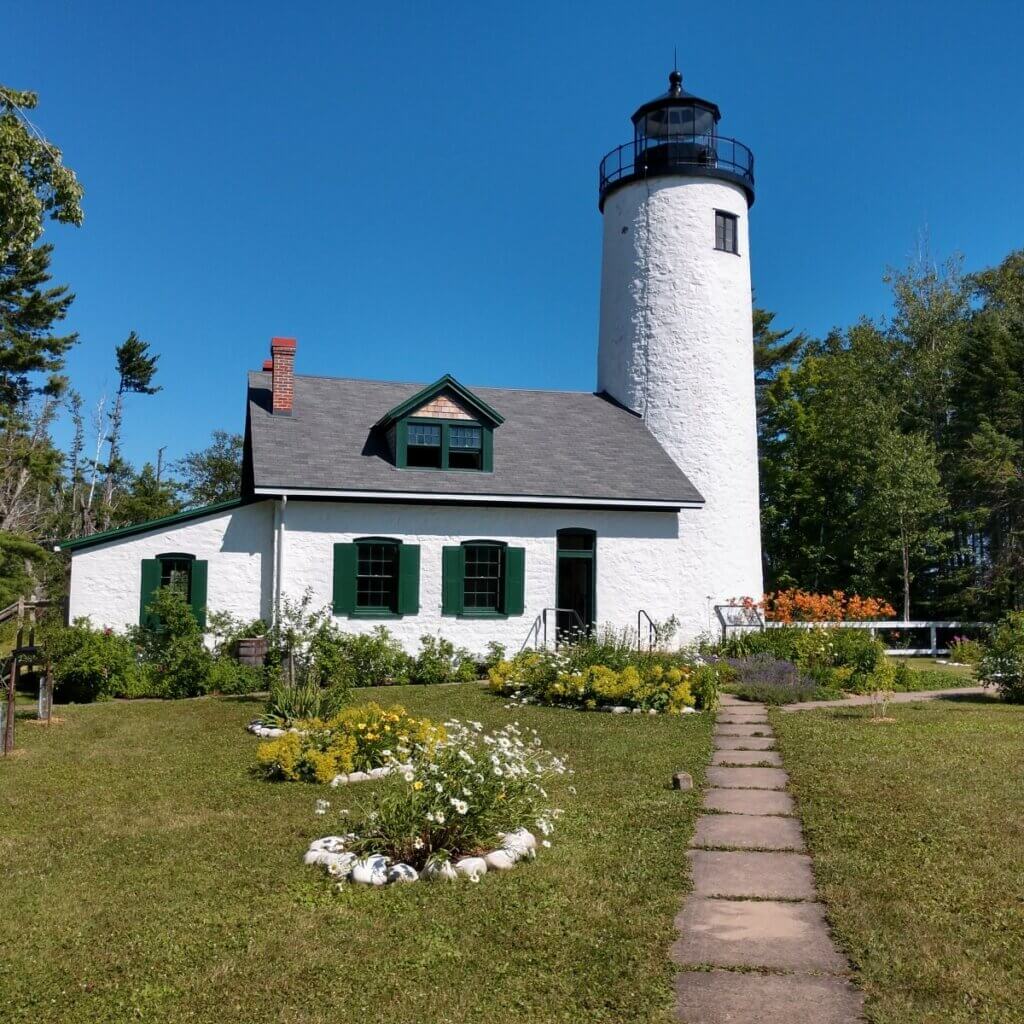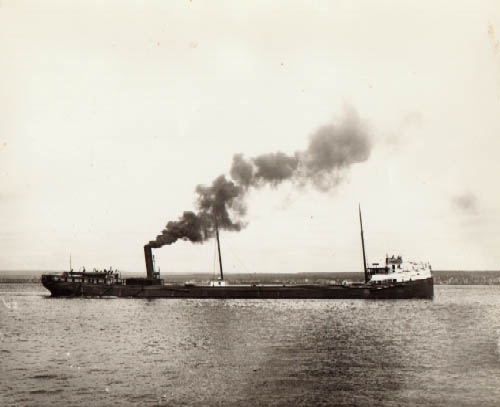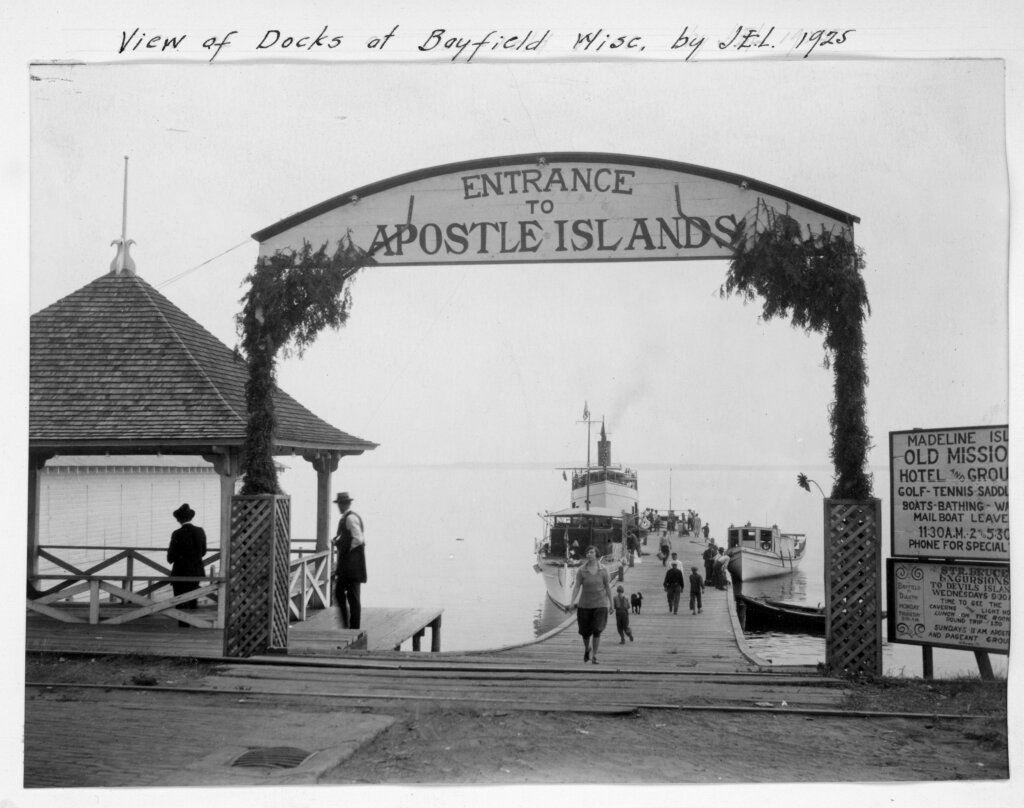Like the sea caves and shoreline that have been carved out for thousands of years by Lake Superior, the Apostle Islands National Lakeshore holds countless tales of those who’ve called it home and were shaped by living in the rural archipelago over the years. Read on for a glimpse at the centuries of stories and legends of the Apostle Islands.

While boat and kayak tours operating out of Bayfield, Wisconsin now draws visitors from across the world, the Apostles were isolated places that were first inhabited by the Ojibwe. Years later, lightkeepers lived in seclusion as the ruralness of the islands kept them mostly confined to their respective stations.
Home of the Ojibwe, the First Inhabitants
Although the Apostle Islands were first declared as a national lakeshore in 1970, the centuries of stories began much earlier. The Ojibwe were the original inhabitants of the area thousands of years ago. With their main village on Madeline Island, known as Moningwunakauning, or “Home of the yellow-breasted woodpecker”, the Apostles provided enough resources for them to live each year.
“From Lake Superior, they would obtain fish year-round. In the fall they would harvest game and gather wild rice. In late winter they would tap the maple trees for their sap which was boiled into sugar. When the blossoms began to show, plants such as leeks, marsh marigold, and fiddleheads were used for food,” according to the National Park Service. “Wintergreen, Labrador tea, and sweet flag were some plants that were used medicinally. The bark from the white birch was used to make wigwams, storage containers, and canoes. When summer came, berries such as strawberries, raspberries, and blueberries were gathered. Franklin Basina, an Ojibwe elder, had once said, ‘When I was young those blueberries hung like grapes on those islands. I can only imagine what they used to be like before the other settlers came.’”
How They Came to be the “Apostle Islands”

In the late 1660s, Jesuit priests Claude Allouez and Jacques Marquette established a mission at La Pointe du Saint Espirit on the largest of the islands, Madeline Island, and it is now considered one of Wisconsin’s oldest settlements. This marked the European influence on the islands, particularly that of the French. Although there are 22 islands, and only 12 apostles, the famous priest, traveler, and historian Pierre François Xavier de Charlevoix allegedly renamed the islands “Apostle Islands” after the twelve largest of the archipelago. Some believe he may have simply wished to honor the followers of Jesus by naming a gorgeous place after them. Of course, that the most famous of the islands has been dubbed “Devils Island” would probably not have gone down well with the holy men.
Lighthouse Keepers: An Isolated Affair
Following their settlement, the European soon discovered how dangerous a chain of islands could be on the largest of the Great Lakes, Lake Superior. Seven light stations in the Apostle Islands guide ships through the archipelago to this day. Although these lights now operate automatically, lighthouse keepers once tended them. While some of the keepers lived alone, others brought their families to the lonely islands.
In the late 1800s, Anna Maria Carlson married Robert Carlson, an assistant keeper at the Outer Island Light where they lived and worked. A few years later, Robert was promoted to head lightkeeper at the Michigan Island light. In his first year, Robert and his brother went on a winter fishing trip. Suddenly, the ice broke up and they were carried out into the open lake.
“I was always afraid to be alone on the island,” Anna told a Detroit News reporter once. “A city-bred girl, the stark loneliness of it was appalling. As soon as they left the house I ran about and locked all the doors and windows. Yet there was nobody on the island but myself, and the children.”

The men were adrift for four days while Anna tended the children, lighthouse, cows, and chickens. Though she felt “hysteria” sinking in after the first night, she remained strong for her children. The men returned after crossing several ice floes to Madeline Island, where they made a fire, boiled flour to make a sort of gruel, and discovered an abandoned fishing boat that they navigated back to Michigan Island.
Shipwrecked on the Big Lake

The Ojibwe believed a great sea monster lurked underneath the surface of Lake Superior – “a sort of lynx-like creature known as Mishi Peshu which represented the raw power, mystery, and – most importantly – the innate danger that came from challenging the sacred waters. The beast demanded respect and like the lake itself, was not to be taunted or provoked. Only the bravest – or perhaps the most insane – warriors set out in their canoe without first paying homage to the lake’s Great Spirit,” according to the National Park Service.
Although the Apostle Islands are home to the highest concentration of lighthouses in North America, dozens of shipwrecks have taken place in the area.
The Wreck of the Sevona
However, one of the more notable shipwrecks in the area was the Sevona. On September 1, 1905, the vessel left Allouez, Wisconsin for Pennsylvania with a cargo of iron ore and a crew of around 30.
An unexpected storm hit the area in the evening and by midnight the wicked gale winds took hold. In the early hours of September 2, the Sevona crashed on the Sand Island shoal and broke in half. While most passengers floated to safety on lifeboats, others weren’t so lucky. Three other vessels and 12 lives were lost in the storm.
Learn More

With the centuries of stories of Apostle Islands, it’s hard to pack it all into one quick read. One of the best ways to learn all about the legends and tales of the Apostle Islands is to see the natural wonders and experience the stories for yourself. Go for a hike along one of the many trails or hop aboard a narrated cruise that highlights the rich history of centuries of human interaction. It’s waiting for you!




